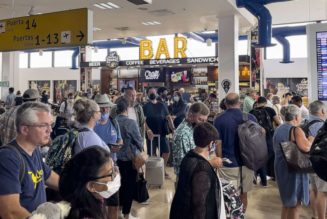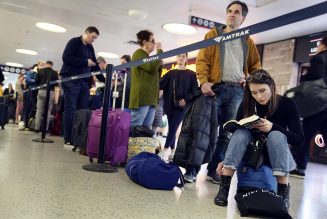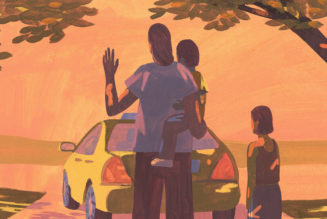Summer travel is back. So back, in fact, that the federal Transportation Security Administration is projecting that more folks will be boarding flights this summer than in 2019. Between Thursday and July 5, it’s expecting to screen almost 18 million travelers.
Just how many of them will make it to their destinations without hitting delays, canceled flights, and other snags is uncertain. On Monday, just ahead of a major US holiday weekend, more than 9,000 flights were delayed or canceled, mostly due to severe storms that threatened the Northeast, according to FlightAware. Then, on Tuesday, almost 7,800 flights were delayed as storms and tornadoes ripped through the Southeast and Ohio Valley. The Federal Aviation Administration, which enforces airline industry regulations and also manages air traffic, advised Wednesday that low clouds and thunderstorms could again affect flights on the East Coast, among other places in the US. (All this comes as the FAA forecasts that the heaviest day of travel for the Fourth of July holiday will be Thursday, with an estimated 52,564 flights taking off across the US.) These delays have left thousands of travelers stranded at airports awaiting flights, or without clarity on whether they’ll get to their destinations at all.
That’s a lot of flight disruptions — the culmination of a perfect storm of bad weather, a barrage of travelers unlike any we’ve seen in the past few years, and lingering staffing and scheduling issues in the airline industry. The FAA has not reported any staffing triggers on the East Coast on Monday or Tuesday, when delays and cancellations were at their highest, though more broadly it still faces a shortage of critical workers. The Association of Flight Attendants, which represents United’s unionized workers, meanwhile, released a memo this week lamenting the delays and calling out airline management for “irregular operations” straining employees, especially those who have been on duty for an extended time.
To be clear, this week’s snarled and canceled flights are mostly the result of the weather. Weather is the cause of about three-quarters of air-traffic delays, and there’s not much airlines can do when a series of thunderstorms gets in the way. Severe weather in one part of the country doesn’t just stay localized, either. Interruptions in major airports have ripple effects everywhere else.
Those staffing problems, along with equipment issues, however, have made bad weather even harder to accommodate. Slightly more than 19 percent of flights were delayed last year, in contrast to 2018, when about 17 percent of flights were delayed, according to the Bureau of Transportation Statistics. Almost 4 percent of flights were canceled in 2022. In 2023 so far, delays have affected more than 21 percent of flights.
“Anything well into the thousands is definitely newsworthy,” says Katy Nastro, a travel expert at the flight deals site Going.com (formerly Scott’s Cheap Flights).
Widespread flight delays that have impeded airports and left vacationers stranded have been making news since late last year, and combined with busier airports and the potential for more severe weather to come, this summer could be particularly bumpy for air travel. “Everybody just assumes that the winter is the time period where you’re going to encounter tons of delays and cancellations,” says Nastro. Weather-related delays are actually more common in the summer. Not only do rain and thunderstorms impact flights, but heat waves can also render airport tarmacs unsafe for workers, while high temperatures change the density of the air and affect whether a plane can take off. Hot weather can even lead to passengers getting booted off flights to adjust for changing weight limits.
Smoke and ash from wildfires will throw a wrench in flying, too. Smoke is more disruptive than fog or rain, the FAA’s Kevin Morris explained in a recent tweet, because flight navigation systems are designed to work well even against water droplets, but fare less well with solid particles such as those in smoke. In early June, the FAA briefly grounded flights at New York’s LaGuardia airport when smoke from a Canadian wildfire turned the city’s air quality into the worst in the world: On June 7, more than 6,000 flights were delayed by mid-afternoon. This week, smoke from the ongoing wildfires is heavily impacting Chicago, whose O’Hare airport is now facing higher disruptions.
Planes can operate during extreme weather, and aircraft can safely fly above thunderstorms. Delays happen because airports and airlines have to be more careful during takeoff and landing, which means they move more slowly. That might mean they increase the space between planes or increase the time between one plane landing and another one taking off. Wind can postpone a plane flying or landing, too. With everything operating at a slower pace, the delays start to pile up and can even lead to cancellations.
There’s one other factor at play as we head into summer travel season: Climate scientists have long been telling us that extreme weather is more likely to occur, and likely to be more intense, due to the climate crisis. On Wednesday, wildfire smoke began drifting toward the East Coast again. While the West Coast is no stranger to life disruptions due to wildfire smoke, that’s a sign that smoky skies could soon become a common feature of life in the Northeast, too. Experts predict, too, that summer 2023 will be particularly hot, and that’s all but guaranteed to affect travel.
Beyond weather and our increasingly dire climate, persistent issues with old technology and labor shortages have made air travel less reliable over the past year. Frustrations came to a head last December when Southwest Airlines canceled almost 3,000 flights during the peak holiday travel week. Inefficient scheduling, miscommunication, and staffing shortages all contributed to the mass cancellations. “During the pandemic, a lot of airlines gave buyouts to some of these older pilots,” explains Nastro, reducing their labor costs, but creating a dearth of experienced staffers just as travel ramped back up.
Travel disruptions aren’t solely the fault of foul weather or the airlines — the FAA shortage is also very real — but the federal government is trying to hold the industry more accountable. The Department of Transportation plans on proposing a new rule requiring airlines to compensate passengers for excessive delays and cancellations.
In response to the mishaps and mayhem of 2022, airlines and the government have also ostensibly been trying to gird themselves for this summer and the unprecedented demand for air travel. That has meant hiring more pilots and air traffic controllers, and reducing the total number of flights while increasing the capacity of aircraft.
Still, these problems don’t go away overnight. “Pilots take time to train,” Nastro says.
Over the past few days, United Airlines’ flights had the most disruptions. In an internal memo, United CEO Scott Kirby blamed the FAA, writing that it had “failed us this weekend” and pointing to its lack of experienced staff at the administration. The FAA told Vox in an emailed statement that it would “always collaborate with anyone seriously willing to join us to solve a problem.” It also said that it is taking steps to keep air travel “safe and smooth” this summer, including by encouraging airlines to fly fewer but bigger planes, which helps reduce traffic while still being able to deliver the same number of passengers to their destinations.
For passengers, there’s no hard and fast rule to avoid interruptions to planned air travel. Weather patterns can shift quickly and unexpectedly. “Try to take a morning flight, or try to take a nonstop flight,” Nastro advises. Early morning flights rank 25 percentage points higher on their on-time arrival rate than afternoon or evening flights. Delays and cancellations often occur due to snowballing effects of slowdowns, getting worse as the day drags on.
Nastro argues that it’s not all that helpful to look at which airports or airlines have the worst track records of delays and cancellations in a given period. That’s not an indication that bad weather won’t hit a usually on-time airport next. “It changes year to year. It can change month to month,” she says.
She also advises fliers to avoid assuming the worst will happen. Strict regulations around commercial air travel are the reason why it’s one of the safest modes of travel — far more than private flight or driving, and definitely more than private submersible excursions.









